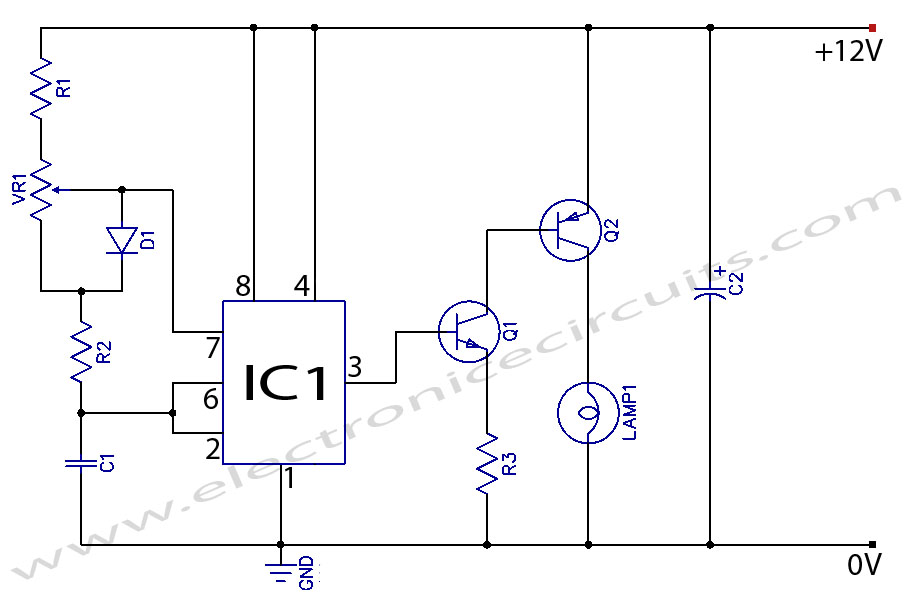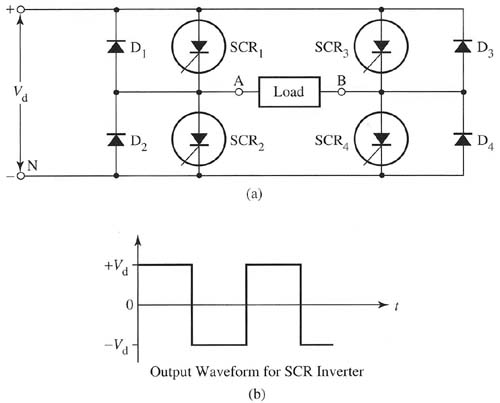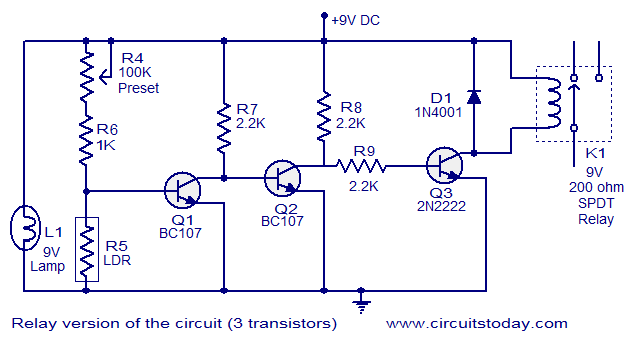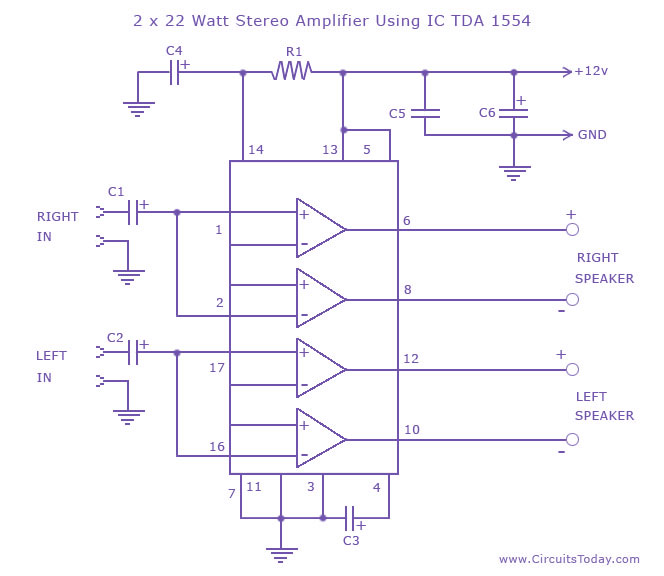
60W inverter using transistors
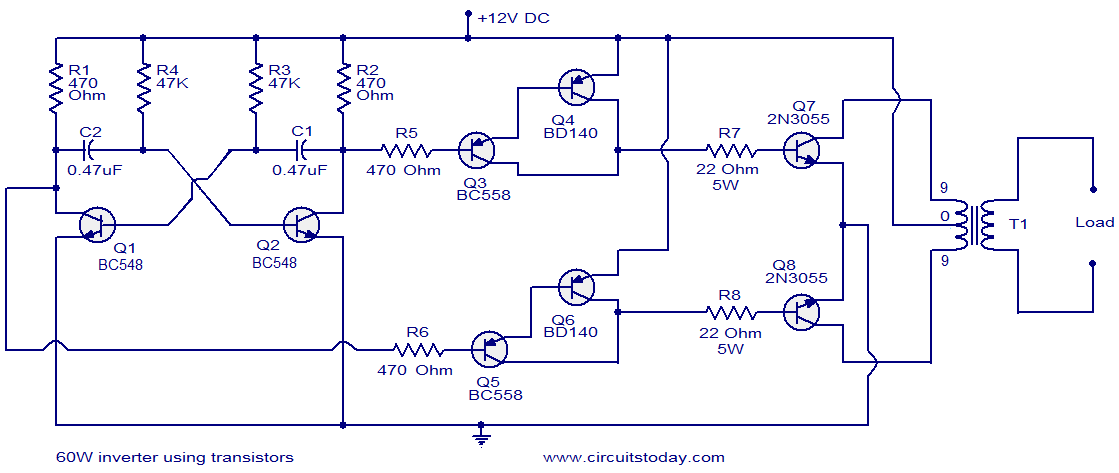
This circuit diagram illustrates a fully transistorized inverter capable of driving loads of up to 60W. Transistors Q1 and Q2 create a 50Hz astable multivibrator. The output from the collector of Q2 connects to the input of a Darlington pair composed of Q3 and Q4. Likewise, the output of Q1 is linked to the input of the Darlington pair formed by Q5 and Q6. The outputs from these Darlington pairs drive the final output transistors Q7 and Q8, which are configured in a push-pull arrangement to operate the output transformer.
The described inverter circuit is designed to convert DC voltage into an AC voltage suitable for powering various loads. The core functionality is based on an astable multivibrator configuration, which generates a square wave output at a frequency of 50Hz. Transistors Q1 and Q2 operate in this configuration, where they alternately turn on and off, creating a continuous oscillation.
The output from Q2 is fed into the base of the Darlington pair consisting of Q3 and Q4. A Darlington pair is advantageous in this application as it provides high current gain, allowing for efficient switching of larger loads. Similarly, the output from Q1 drives the Darlington pair formed by Q5 and Q6, ensuring that both branches of the inverter can effectively drive the final output stage.
Transistors Q7 and Q8 are arranged in a push-pull configuration, which is critical for driving the output transformer. This configuration allows for the efficient transfer of energy to the transformer, maximizing the inverter's output power capability. The transformer then steps up or down the voltage as required for the load being powered.
In summary, this inverter circuit employs a combination of astable multivibrator and Darlington pairs to achieve a reliable and efficient AC output from a DC source, suitable for driving loads up to 60W. The use of transistors in a push-pull configuration enhances the performance and efficiency of the inverter, making it a practical solution for various applications.Here is the circuit diagram of a fully transistorized inverter that can drive up to 60W loads. Transistors Q1 and Q2 forms a 50Hz astable multivibrator. The output from the collector of Q2 is connected to the input of the Darlington pair formed by Q3 and Q4. Similarly the output of Q1 is coupled to the input of the pair Q5 and Q6. The output from t he Darlington pairs drive the final output transistors Q7 and Q8 which are wired in the push pull configuration to drive the output transformer. 🔗 External reference
The described inverter circuit is designed to convert DC voltage into an AC voltage suitable for powering various loads. The core functionality is based on an astable multivibrator configuration, which generates a square wave output at a frequency of 50Hz. Transistors Q1 and Q2 operate in this configuration, where they alternately turn on and off, creating a continuous oscillation.
The output from Q2 is fed into the base of the Darlington pair consisting of Q3 and Q4. A Darlington pair is advantageous in this application as it provides high current gain, allowing for efficient switching of larger loads. Similarly, the output from Q1 drives the Darlington pair formed by Q5 and Q6, ensuring that both branches of the inverter can effectively drive the final output stage.
Transistors Q7 and Q8 are arranged in a push-pull configuration, which is critical for driving the output transformer. This configuration allows for the efficient transfer of energy to the transformer, maximizing the inverter's output power capability. The transformer then steps up or down the voltage as required for the load being powered.
In summary, this inverter circuit employs a combination of astable multivibrator and Darlington pairs to achieve a reliable and efficient AC output from a DC source, suitable for driving loads up to 60W. The use of transistors in a push-pull configuration enhances the performance and efficiency of the inverter, making it a practical solution for various applications.Here is the circuit diagram of a fully transistorized inverter that can drive up to 60W loads. Transistors Q1 and Q2 forms a 50Hz astable multivibrator. The output from the collector of Q2 is connected to the input of the Darlington pair formed by Q3 and Q4. Similarly the output of Q1 is coupled to the input of the pair Q5 and Q6. The output from t he Darlington pairs drive the final output transistors Q7 and Q8 which are wired in the push pull configuration to drive the output transformer. 🔗 External reference

